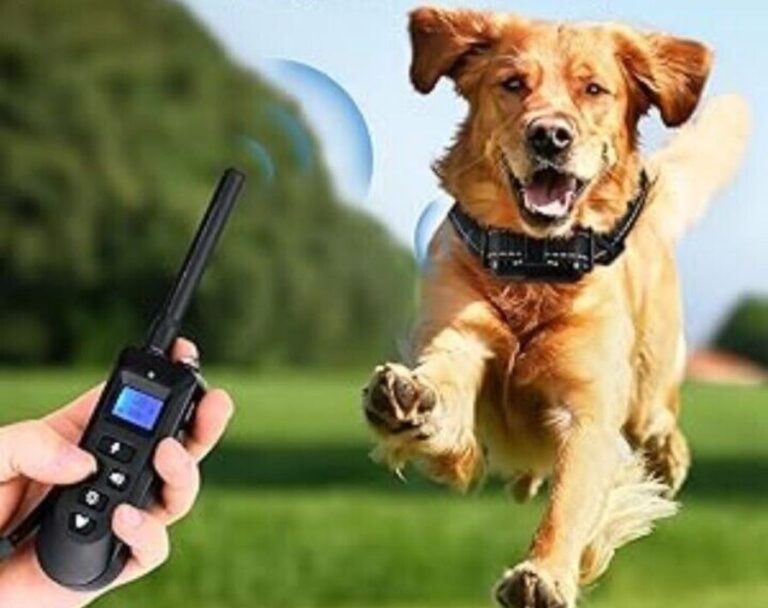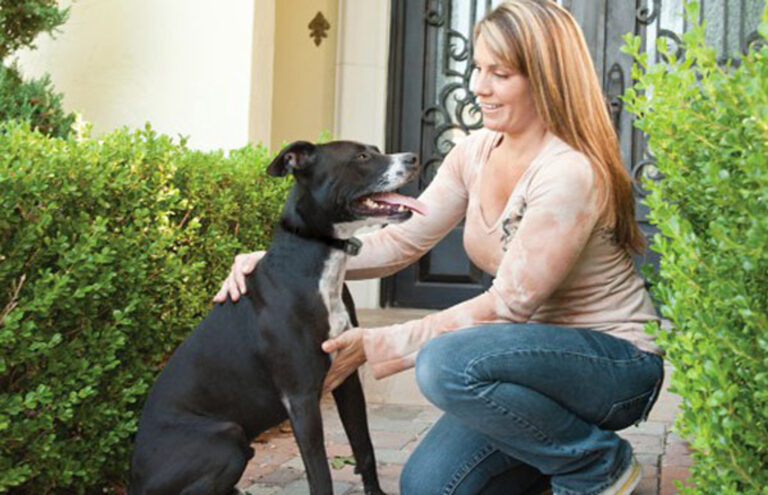The dangerous consequences of bark collars

Are Bark Collars Safe for Dogs
Most of the time, we can tune out a few barks here and there, but when it keeps going, it can really get on our nerves. For some of us, the consequences of excessive barking go beyond just irritation. In extreme cases, a barking issue can even lead to a landlord threatening eviction, or frustrated neighbors leaving notes. That’s when a barking dog becomes more than a nuisance – it’s a major problem.
Now, I won’t pretend that my dogs’ barking doesn’t sometimes drive me a little crazy. I think anyone with a dog has felt that way at some point. But what can we actually do if our dog’s barking has become disruptive enough to cause trouble for us? Are there humane ways to handle it that don’t just mask the problem but truly address it?
A quick search for “solutions to dog barking” will turn up a flood of options, and one of the first “solutions” you’ll find is shock collars. These devices are designed to give a brief electric shock each time the dog barks. To someone wanting an immediate fix, a shock collar might seem like the answer. But here’s the truth: while shock collars can reduce barking temporarily, they don’t tackle the root issue and can create lasting harm for both your dog and the relationship you share. Using a shock collar is often just a quick fix for what is typically a deeper problem, and one that’s rooted in the dog’s emotional state.
Research indicates that using aversive methods like shock collars can harm a dog’s emotional well-being and potentially increase aggression over time. For already nervous dogs, shock collars may heighten fear and lead to new behavioral issues.

Dogs bark for all kinds of reasons, and I generally find it helpful to group these into a few main categories. The first major reason is stress, anxiety, or fear. These reactions are instinctual. Think of the earliest dogs, long before they were domesticated: when a young pup was separated from its litter or mother, it would whine or bark to signal its location.
Similarly, when dogs feel alone or anxious today, they may bark to try to draw attention or to feel more secure. This kind of barking is often defensive. Dogs may bark when they hear something they perceive as a potential threat – whether that’s an unfamiliar noise or the sight of a stranger. To them, they’re defending their territory or themselves from what they interpret as a possible danger.
The second reason some dogs bark is boredom and a lack of physical and mental stimulation. A dog with pent-up energy needs an outlet, and barking can fill that need. My own dog, Berkley the Australian Shepherd, is a prime example: if he doesn’t get enough exercise, he starts barking at anything that moves. But when he’s had a good run or a challenging play session, he’s much more likely to just relax, even if a fire engine roars by with sirens blaring.
The third common reason? Some dogs just plain enjoy barking. Think of an excited dog: barking can be their way of expressing excitement at seeing a friend – human or canine. It’s just part of how they communicate and interact with the world. Barking is a key method for dogs to communicate, especially if they can’t get their message across through body language alone. In fact, body language is often the primary way dogs communicate. When they can’t get a reaction through subtler cues, like turning their head away, lip-licking, or yawning, they may escalate to barking or growling. This escalation process is known as “The Canine Ladder of Aggression.” If these vocal warnings are still ignored, a dog may eventually resort to snapping or even biting.
Humans can actually relate to this. Imagine you’re trying to warn someone about a danger, but they just keep ignoring you. Your first response might be to talk louder, maybe wave your arms, and if all else fails, grab their attention with a more intense action. Dogs are no different. If we try to stop a dog from barking by using a shock collar, we’re essentially cutting off their way of communicating without addressing why they’re barking in the first place. Studies have shown that using aversive methods like shock collars can harm dogs’ emotional well-being and may even increase aggression over time (Ziv). For an already nervous or fearful dog, a shock collar can actually intensify that fear and create new behavioral issues (Cooper et al.).
So, how can we handle excessive barking without causing harm? The first step is understanding why the dog is barking and addressing that root cause. If your dog is barking out of boredom or pent-up energy, the solution is straightforward: provide more physical and mental stimulation. We may think a walk around the block is enough, but in reality, many dogs need a bit more to stay truly happy and calm. Activities like fetch, tug-of-war, or puzzle games that make them think can be extremely helpful for burning energy and engaging their minds.
If your dog tends to bark at people or animals passing by, try changing their environment. Moving your dog’s resting spot away from front windows or adding frosted film can reduce visual stimulation and help cut down on the barking. Another effective approach is teaching a new behavior to replace barking, like running to a mat or bed whenever the doorbell rings. In Changing People, Changing Dogs, author Dee Ganley describes a case where a dog would bark and lunge whenever a guest arrived. By teaching the dog to run to a specific spot in response to the doorbell, the owners redirected the dog’s energy into a harmless task, ultimately reducing the barking.
For dogs with separation anxiety or isolation distress, crate training with the help of dog toys can provide comfort. Stuffing a treat-dispensing toy with food before leaving gives your dog something to focus on, turning your absence into a positive experience. Over time, this training can help your dog feel more secure when left alone and reduce anxious barking.
In conclusion, while shock collars may seem like a quick fix, they don’t address the core reasons behind your dog’s barking and can cause more harm than good. By understanding why your dog is barking and addressing it with positive training techniques, you’ll not only reduce unwanted barking but also build a healthier, more trusting relationship with your pet.
Remember, when we chose to bring dogs into our lives, we committed to providing them with care, training, and love – not to silencing them with aversive tools. With patience and the right approach, you can help your dog live a happier, quieter life.
Works Cited:
Cooper, Jonathan J., et al. “The Welfare Consequences and Efficacy of Training Pet Dogs with Remote Electronic Training Collars in Comparison to Reward Based Training.” PLOS ONE, Public Library of Science, 3 Sept. 2014, journals.plos.org/plosone/article?id=10.1371%2Fjournal.pone.0102722.
Ganley, Dee, et al. Changing People Changing Dogs: Positive Solutions for Difficult Dogs. DeesDogs, 2008.
Garrett, Susan, director. Crate Games Part 1. YouTube, YouTube, 28 June 2009, www.youtube.com/watch?v=L8HNO79bZMY&t=185s.
“Handout: Canine Ladder of Aggression.” dvm360.Com, 17 May 2017, veterinarymedicine.dvm360.com/handout-canine-ladder-aggression.
Shelley-Grielen , Frania. “AnimalBehaviorist.us.” AnimalBehaviorist.us – Reading the Canine Ladder of Aggression, 2017, www.animalbehaviorist.us/dogs/reading_the_canine_ladder_of_aggression.
Ziv,Gal. “The Effects of Using Aversive Training Methods in Dogs-A Review.” Journalof Veterinary Behavior, Elsevier, 22 Feb. 2017,www.sciencedirect.com/science/article/pii/S1558787817300357.
Read related posts about





